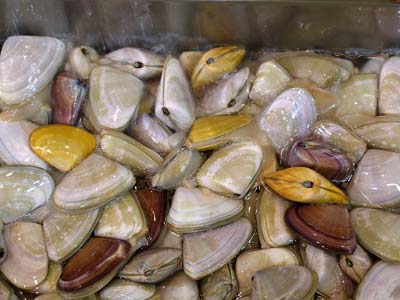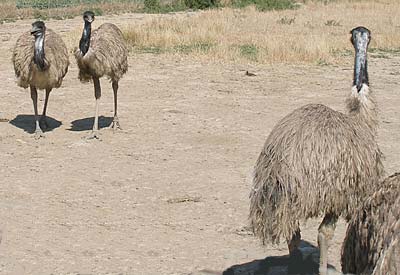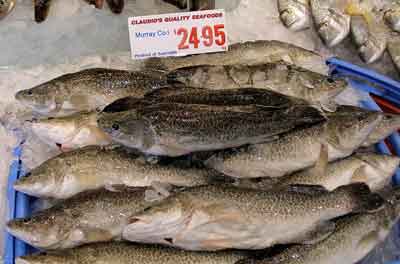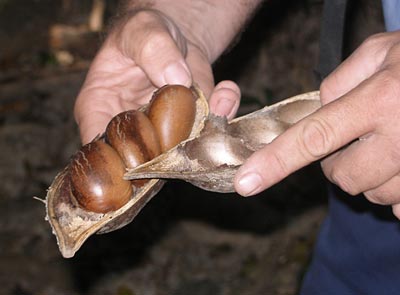Ground bush tomato, with a taste similar to sun-dried tomatoes, with a sweet, almost caramel flavour. Good in pasta sauce or salads or added to marinades for meat or fish.

A smooth, wedge-shaped clam, longer than high, varying in colour from creamy white, pale brown or green and tinged sometimes with mauve or pink, usually found around 5-6 cm (2") in across. They are found in the sand in the intertidal zones where waves are high, about 10 cm (4 cm) under the surface. They are found all round the coasts of Australia but are particularly taken in the south east. They are useful in soups.

A flightless bird native to Australia. Emus are eaten either where food is scarce and emus are available or as an "exotic meat" Like ostrich, the meat is red but low in fat and cholesterol.

A smooth, wedge-shaped clam, longer than high, varying in colour from creamy white, pale brown or green and tinged sometimes with mauve or pink, usually found around 5-6 cm (2") in across. They are found in the sand in the intertidal zones where waves are high, about 10 cm (4 cm) under the surface. They are found all round the coasts of Australia but are particularly taken in the south east. They are useful in soups.

A name for Murray cod, a freshwater similar to the golden perch and found in slow-flowing turbid rivers of south eastern Australia, mainly the Murray and Murrumbidgee rivers. It is usally sold skinned. This is a highly-regarded and highly-priced fish.

A smooth, wedge-shaped clam, longer than high, varying in colour from creamy white, pale brown or green and tinged sometimes with mauve or pink, usually found around 5-6 cm (2") in across. They are found in the sand in the intertidal zones where waves are high, about 10 cm (4 cm) under the surface. They are found all round the coasts of Australia but are particularly taken in the south east. They are useful in soups.

Blackbeans. These almost conker-like beans are found in the tropical rainforest of north eastern Australia, often found along creeks and rivers. When crushed the leaves smell almost like cucumber. The seeds, held in a generous pod, are poisonous in their raw state. However, as with many other things, the aboriginals found way to make use of these and found that, by baking them on hot coals, ground and then washed in continuously running fresh water for ten days or so, they could make an edible flour. These were formed into shapes and then baked. Not very appetising but good source of starch when you are scraping your sustenance from such a hostile environment. It is recommended that you don't attempt to eat these beans. Even the aboriginals did not eat them except in times of scarcity.

A pipi is a smooth, wedge-shaped clam, longer than high, varying in colour from creamy white, pale brown or green and tinged sometimes with mauve or pink, usually found around 5-6 cm (2") in across. They are found in the sand in the intertidal zones where waves are high, about 10 cm (4 cm) under the surface. They are found all round the coasts of Australia but are particularly taken in the south east. They are useful in soups.